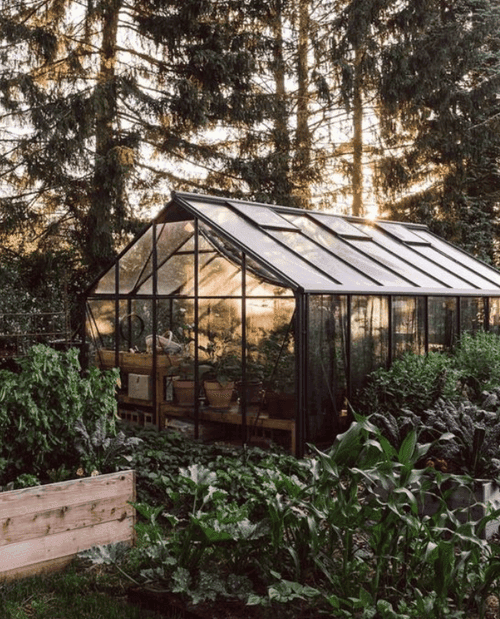Tailored to Excellence: Monarch Custom Greenhouse Utah Craftsmanship
The Future of Greenhouses: Developments in Sustainable Farming
Are you curious regarding the future of greenhouses and just how they are revolutionizing sustainable farming? From innovative environment control systems to upright farming strategies, water-efficient watering techniques, eco-friendly energy integration, and smart information analytics, these innovations are changing the means we expand our food.
Advanced Climate Control Equipment
To attain optimum expanding problems, you can rely upon the developments in greenhouses with sophisticated climate control systems. These systems have reinvented the way we cultivate crops, providing a regulated setting that is helpful to plant growth. With these innovative systems, you can now manipulate temperature, humidity, light levels, and even CO2 concentrations to create the best conditions for your plants to flourish.
Among the essential functions of these innovative climate control systems is their capability to control temperature. By using sensing units and automated controls, the greenhouse can readjust the temperature level based on the specific demands of the plants. This ensures that they are never ever subjected to extreme warmth or chilly, which can be destructive to their growth.
Moisture control is an additional crucial facet of these systems. By maintaining the ideal moisture levels, you can prevent concerns such as mold, mold, and disease from influencing your crops. These systems can additionally manage the amount of light that gets to the plants, making sure that they get the optimum quantity for photosynthesis.
Additionally, progressed climate control systems can also manipulate carbon dioxide focus. By enhancing the degrees of carbon dioxide in the greenhouse, you can improve plant growth and productivity. This is specifically useful in locations with reduced all-natural CO2 degrees.
Vertical Farming Methods
One important vertical farming method is using stacked growing systems. Stacked expanding systems are generally utilized in metropolitan locations where room is restricted.
One preferred technique is called upright hydroponics, where plants are expanded in nutrient-rich water without dirt. This technique is highly effective as it lowers water use by approximately 90% contrasted to traditional farming techniques. In addition, given that the plants are grown inside, they are safeguarded from bugs and illness, minimizing the need for pesticides.
One more technique is aeroponics, which involves suspending the plant roots in a mist or air environment. This method allows for optimum nutrient absorption and oxygenation, resulting in faster growth and higher returns. Aeroponics additionally makes use of much less water than standard farming and can be applied in upright systems, making it a prominent option for vertical farming.
Water-efficient Irrigation Methods
Maximizing water conservation is vital when it concerns executing water-efficient irrigation approaches in sustainable farming. With global water deficiency ending up being a pressing concern, it is vital to develop innovative techniques that enhance water use in greenhouse procedures.
One promising technique is drip watering, which provides water straight to the plant roots, minimizing waste and dissipation. By utilizing a network of tubes with small emitters, water is used slowly and specifically, ensuring that plants get the necessary wetness without excess runoff.
One more efficient technique is making use of soil wetness sensing units. These devices measure the moisture material in the dirt and offer real-time data to farmers. By keeping track of the dirt's dampness levels, farmers can precisely figure out when and exactly how much tallest grass in the world water to use, avoiding over-irrigation.
Furthermore, the implementation of rain harvesting systems is acquiring popularity in greenhouse farming. Accumulating rainwater from roofs and saving it in containers enables farmers to use this natural deposit for watering functions, decreasing reliance on typical water sources.
Last but not least, the adoption of automated watering systems can substantially enhance water performance. These systems utilize sensing units to find soil dampness levels and weather, adjusting irrigation schedules accordingly. By enhancing water use based upon actual plant demands, these systems can minimize water waste and advertise sustainable farming methods.
Renewable Resource Integration
Eco-friendly energy assimilation in greenhouses supplies numerous advantages, including reduced operating costs and lowered dependence on non-renewable energy resources. The created power can then be used to run different procedures within the greenhouse, such as home heating, air flow, and lights systems. These wind turbines harness wind power and transform it right into electricity, which can be utilized to supplement the power demands of the greenhouse.
Smart Information Analytics and Automation
To boost the effectiveness of your greenhouse operations and enhance resource usage, take into consideration carrying out wise information analytics and automation. Smart data analytics involves gathering and analyzing data from numerous sensors and gadgets within your greenhouse.
This can consist of automating the control of lights, air flow, irrigation systems, and nutrient delivery. By automating these procedures, you can guarantee that your plants receive the best problems and nutrients at the appropriate time, without the requirement for continuous hand-operated intervention.
In addition, clever information analytics and automation can interact synergistically. The information accumulated by sensors can be made use of to educate automatic systems, enabling them to make real-time changes based on the current conditions. This integration of information analytics and automation can bring about much more precise and reliable source appropriation, eventually leading to greater yields and much better plant top quality.
Final Thought
Finally, the future of greenhouses in sustainable agriculture looks appealing. With innovative climate control systems, upright farming methods, water-efficient irrigation techniques, and renewable resource directory assimilation, greenhouses are coming to be much more effective and environmentally friendly. Furthermore, the usage of smart data analytics and automation additionally enhances efficiency and lowers waste. These advancements are paving the way for a more sustainable and reliable agricultural market, ensuring a greener and much healthier future for all.

By enhancing water usage based on actual plant requirements, these systems can lower water waste and advertise lasting farming practices.
